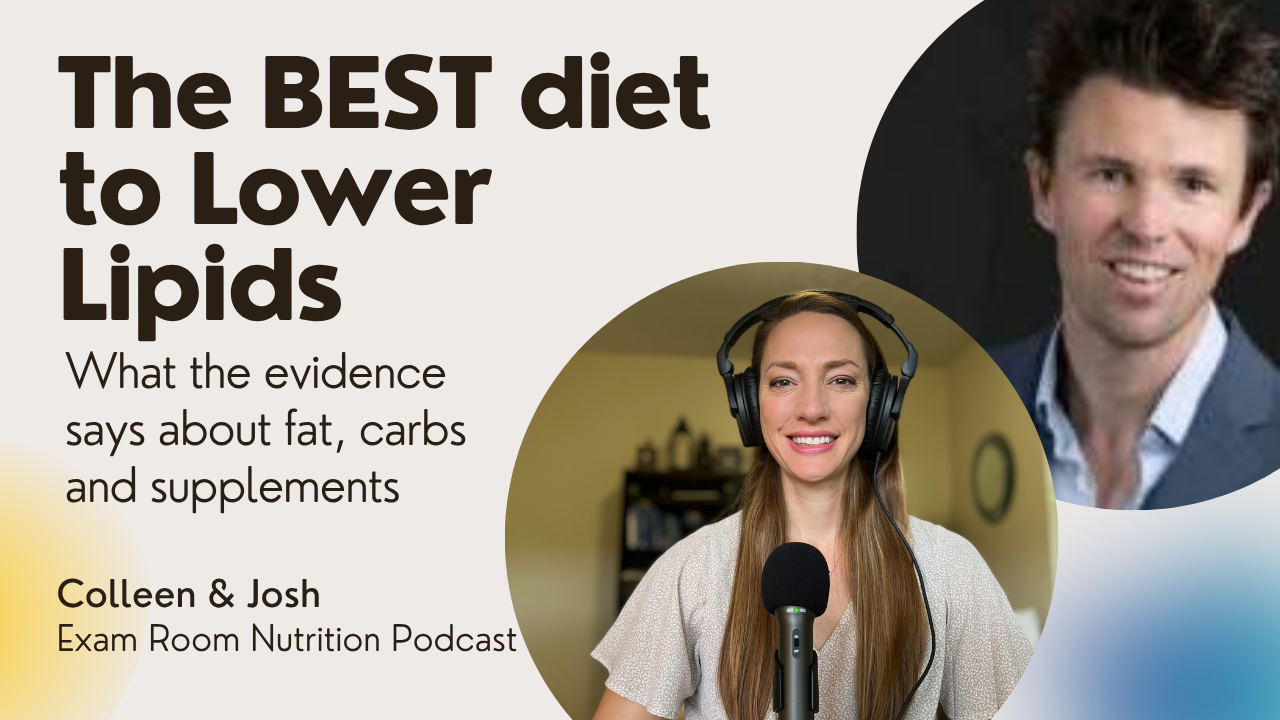The Portfolio Diet

Disease Spotlight | Dyslipidemia
As we all know, elevated LDL cholesterol is a major risk factor for cardiovascular disease. It's a battle we fight daily in our clinics, and while medication plays a crucial role, we also recognize the power of dietary intervention. But let's be honest, the generic "low-fat" advice often feels underwhelming, both for us and our patients.
While there is no single diet that is the "gold-standard" for lowering lipids, many of the recommended dietary patterns do have a few things in common:
- Mostly plant-based
- Strong focus on fruits and vegetables
- Limit processed, packaged foods
- Limit intake of saturated and trans fats
You’re probably well-aware of the Mediterranean diet and DASH diet, consistently ranked as the best overall by US News. However, I want to discuss a lesser-known, but equally promising dietary pattern called The Portfolio Diet.
The Portfolio Diet is a plant-based diet designed to lower blood cholesterol. It gets its name because it emphasizes a "portfolio" of various cholesterol-lowering foods and food components.
Suggest your patient introduce one component at a time to their diet and build from there.
- Plant protein: 50 grams per day. Sources: soy milk, tofu, tempeh, edamame, lentils, beans.
- Nuts: 1 handful (about 23) or 45g per day. Sources: almonds, walnuts, pistachios, cashews.
- Viscous (sticky) Fiber: This is a specific type of soluble fiber that is particularly thick and sticky. It forms a more viscous gel than other soluble fibers, especially good for lowering cholesterol. It is recommended to have 2 servings of oatmeal, barley, beans, lentils and chickpeas, 5 servings of fruit (notably apples, oranges and berries) and vegetables (okra and eggplant) and to replace white bread with whole grain.
- Plant sterols: 2 grams per day. Sources: fortified foods like spreads, yogurt, and milk, or supplements.
While the portfolio diet offers a powerful approach to lowering cholesterol, it's important to remember that individual factors like genetics and metabolism can influence how effectively it works. The key is to focus on gradual, sustainable changes that limit saturated fat and added sugars and focus on fiber and nutrients from whole grains, vegetables, fruits, beans, and nuts.
When talking about cholesterol-lowering diets, the question of butter always comes up.
As science has emerged, we now know that people differ in their sensitivity to saturated fats and dietary cholesterol. Limited amounts of butter for some individuals may not increase CVD risk, while people who have higher LDL cholesterol to start, butter may elicit a stronger LDL-raising effect. Even in moderate amounts, butter has a more harmful effect on cholesterol compared to other unsaturated oils. This is because it increases the number of atherogenic ApoB particles, which are associated with plaque buildup in arteries, and leads to significant increases in LDL-cholesterol levels.
While butter can be enjoyed in moderation as part of a healthy diet, it's important to be mindful of its impact on cholesterol and choose healthier alternatives like olive oil or avocado oil more often.
If your patient is looking for ways to lower their cholesterol, consider introducing them to The Portfolio Diet and suggest incorporating one of the changes.
I had an in-depth conversation on the podcast with Clinical Lipid Specialist Josh Wageman and he shared his framework for lowering a patients risk of cardiovascular disease and dementia. Take a listen here!
References:
https://www.ahajournals.org/doi/full/10.1161/CIRCULATIONAHA.123.065551
https://pubmed.ncbi.nlm.nih.gov/29807048/





